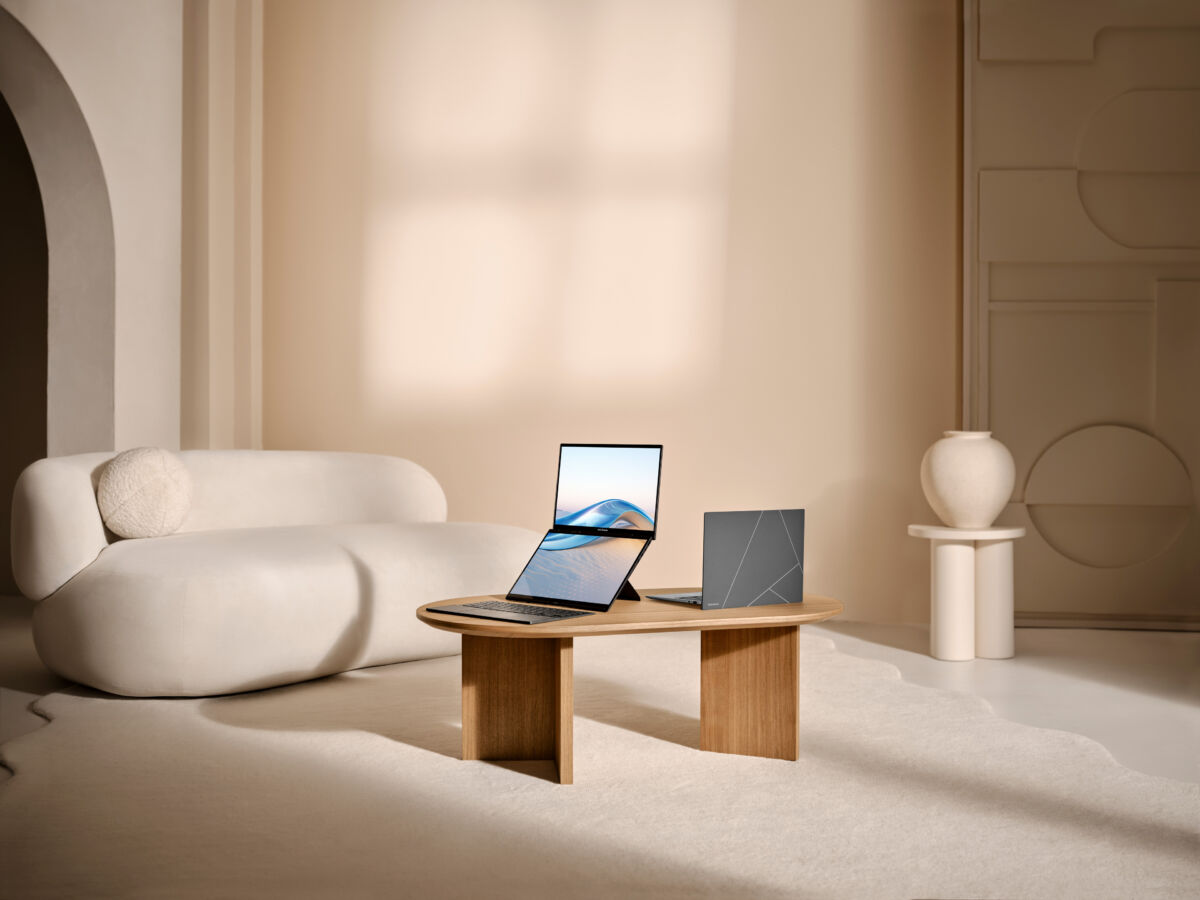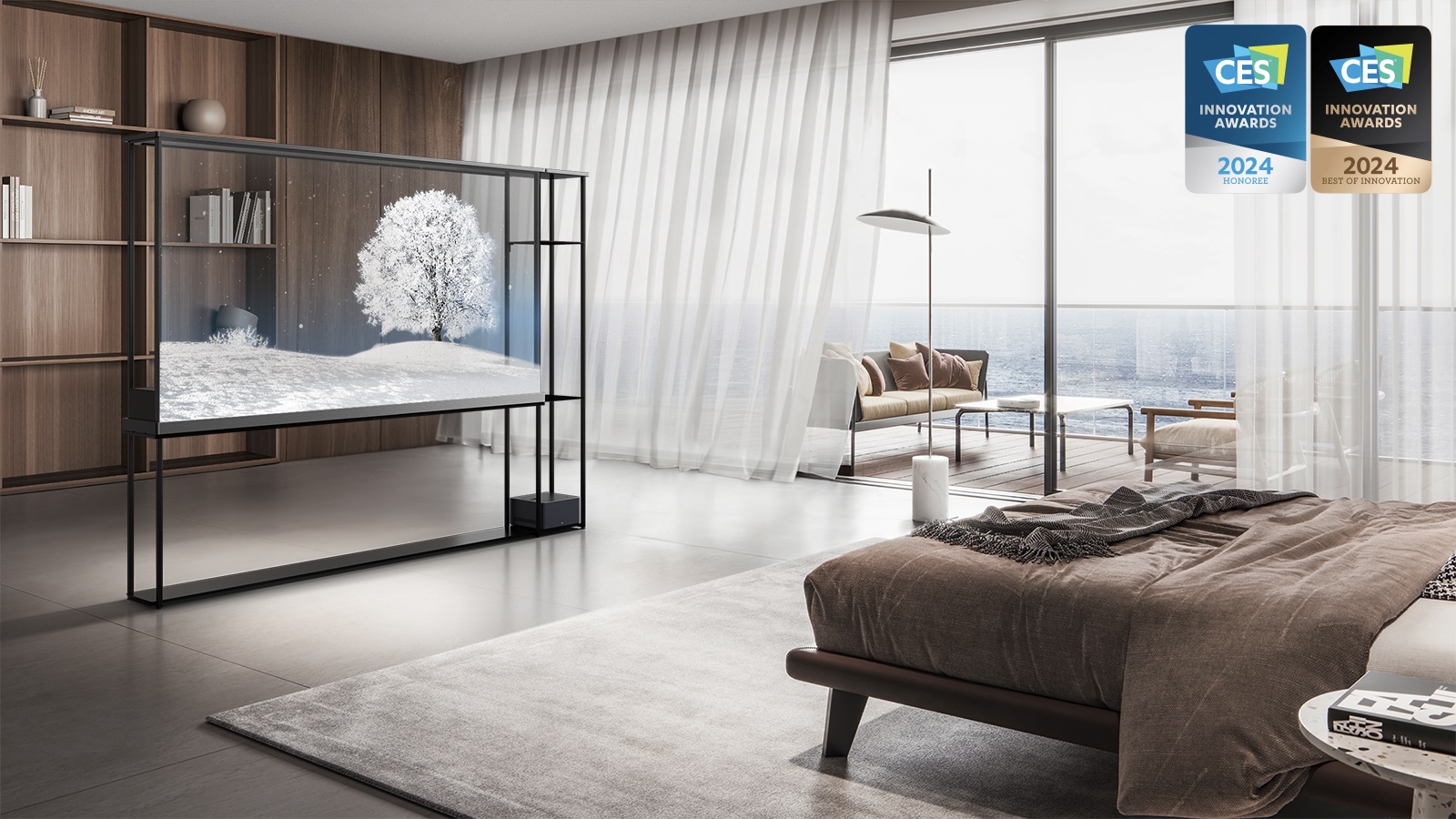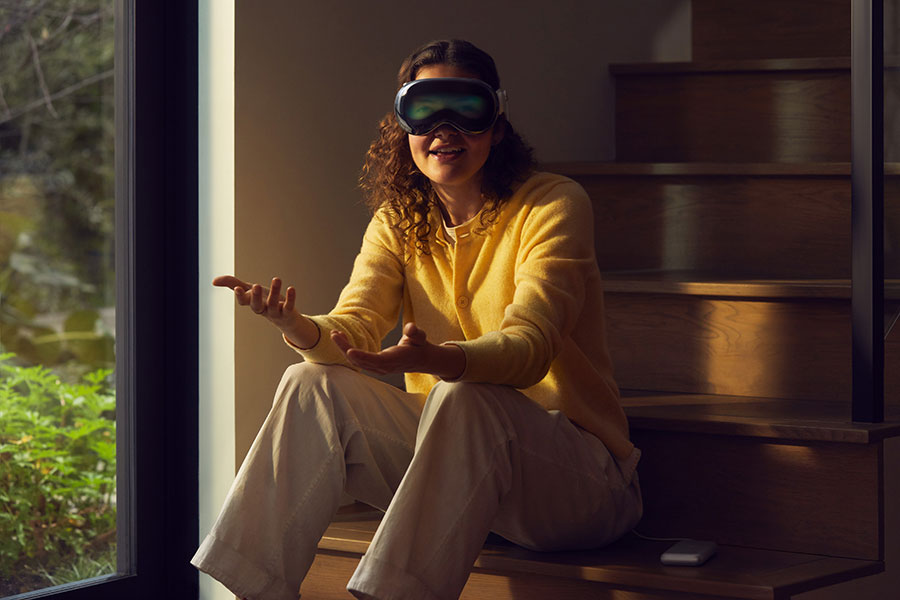4 Major Tech Trends to Watch for in 2024, and What They’ll Mean to You

If you think your TV is big, prepare to enter the era of the 100-inch television trend in 2024. Photo: © 2009-2023 LG Electronics
Contrary to the cheeky phrase, what happens in Vegas doesn’t always stay in Vegas – as evident from the recent Consumer Electronics Show (CES) that recently wrapped up in Sin City.
If you’re not aware, CES is the annual mecca to the Las Vegas Convention Center and surrounding facilities, where tech journalists and other industry types get to kick the tires on tomorrow’s tech today. This is the show that first introduced to the world the VCR in the ‘70s, the CD player in the ‘80s, HDTV in the ‘90s, and driverless cars a decade ago.
For 2024, it’s AI everything.
The explosion of generative AI (artificial intelligence) software in 2023, including popular programs like ChatGPT, is now fusing with devices – added to cars, televisions, laptops, cleaning robots, and even toothbrushes.
Including AI, the following are some of the big tech trends you can expect in 2024.
The AI PC
New laptops powered by Intel will have AI baked into them, to help you get more done in less time. That is, if it has an Intel Core Ultra badge (sticker) on the corner of the laptop.
Now available with all the big computer companies like Dell, HP, Asus, Lenovo, Microsoft, Acer, LG and so on, you can converse with an AI assistant on the laptop itself without relying so heavily on the “cloud” (the internet) – which makes it faster, more secure, and more personalized.
For example, you could ask your laptop “Show me the email about the investment property,” or “Where are the photos from my grandson’s last birthday?”
At the risk of getting too geeky, adding an NPU (neuroprocessing unit) to the CPU (the main brains of your PC) and GPU (for rendering graphics) means you can also ask your laptop to generate original content for you, whether it’s a photo, song, speech, or email.
Super helpful!

Bigger and More Beautiful TVs
Anyone remember when a 46-inch TV was considered huge?
Several television manufacturers unveiled 100-inch TVs (and larger!) at CES.
Hisense, for example, began selling its 100-inch 4K QLED U76N television for $6,999. Sure, seven grand is a lot, but that’s how much a quality 46-inch HDTV could set you back in 2005.
This massive television features quantum dot technology, which yields exceptional colour accuracy and reproduction, plus it’s a 144Hz television for fast rendering of image, which is ideal for fast sports, action movies, and videogames.
And now for something completely different…
Garnering several gasps from onlookers, LG showed a television at the 57th annual CES that’s virtually transparent when turned off, so it blends into your room décor and, when turned on, you can choose from it to be opaque (like your current TV) or show animated images that are seemingly floating around your actual room (like virtual fish swimming in an aquarium).
Called the LG SIGNATURE OLED T, this 77-inch see-through and AI-powered Smart TV is also wireless, to give you more options on where to place it. That is, connect your components, like a cable box or video game system, to the “Zero Connect Box,” which is placed somewhere else in the room, and then up to 4K video and audio is wirelessly transmitted to the television.
This LG OLED T snagged five CES 2024 Innovation Awards but there’s no word yet on if and when it will come to Canada, and for how much if it does.

Smart Home Trends
One of the fastest-growing areas of technology will continue this year.
“Smart home” innovations can help you save money (such as a Wi-Fi thermostat or water leak sensor), give you peace of mind (like a video doorbell or smart alarm system), or add convenience (voice-activated smart blinds, keyless deadbolt, and so on).
And in 2024, you need not worry about compatibility and security thanks to an open-source standard called Matter.
Matter-supported internet-connected devices ensure they’ll all work together – regardless of the make and model – to help simplify setup and use. In other words, you need not buy from the same company, if you don’t want to, as all Matter-certified products can smoothly communicate with each other.
Expect prices to drop for all the big smart home categories this year, as well as the cost for smart speakers powered by Amazon’s Alexa, Google Assistant, or Apple’s Siri.
Mixed Reality
Finally, this might be the year you buy your first mixed reality headset, that combines virtual reality (VR) with augmented reality (AR).
With VR, you slip on a lightweight headset and you’re transported to a fully immersive digital world, complete with 360-degree visuals, tied to head tracking, which means wherever you turn your head in real life (up, down, side-to-side, or even looking behind you), it’s as if you’re looking at this virtual world with your own eyes. This effect is so realistic it can trick your brain into thinking what you see (and hear) is the real deal. And you can “touch” objects, too.
Along with games, there are fitness VR programs, meditation and mindfulness exercises, therapy sessions, chat rooms, virtual vacations, entertainment experiences (like sitting front row at a Cirque du Soleil show or riding a new rollercoaster), and much more.
AR, on the other hand, is where you can still see around you in real life, but digital information is superimposed on top.
Meta Quest 3 (from $649) is the company’s smallest headset, and it ups the resolution over its predecessor now to 4K detail for each eye, resulting in much crisper graphics.
Unlike Meta Quest 2, it also supports colour passthrough, so you can now see and interact with digital info superimposed on top of the world around you, such as an adventure game that looks like you’ve got a treasure chest you can open in your family room, and once you remove the key, you can unlock a door (seemingly on your wall), to continue the quest. It’s really fascinating.
Apple Vision Pro will debut later this year in Canada, too, but will likely cost a pretty penny consider it’s going for USD$3500 south of the border.

If my hands-on time with it is any indication, Apple Vision Pro takes mixed reality to a new level – as I documented my experiences with it here for Zoomer – as it can be used for productivity (collaborate with others not with you, in real time, via a virtual whiteboard), entertainment (interactive virtual reality games and ebook reading), communication (3D FaceTime calls), photography and videography capture and playback (lifelike “spatial images”) and much more.
RELATED:
From Wearables to Home Gear, the Latest Tech For Your Fitness Refresh
Get Wired: 8 Great Gift Ideas for Tech Lovers
From Computers to Smartphones, These Tips Will Help to Ease the Tech Strain on Your Body